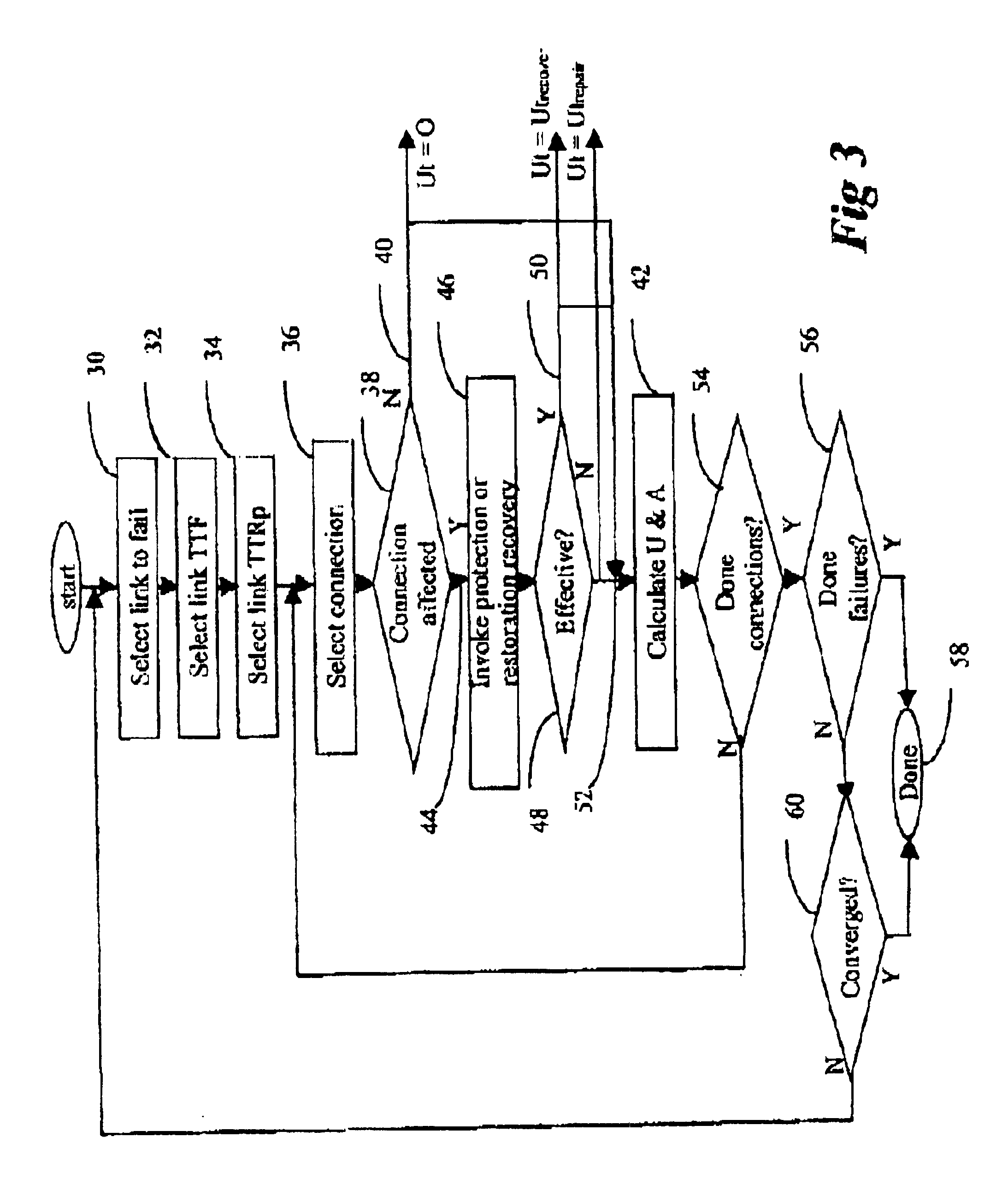Time simulation techniques to determine network availability
a network availability and time simulation technology, applied in the field of time simulation techniques, can solve the problems of large mesh network with multiple nodes and links, arbitrary topology, and relatively little study of availability, and achieve the effect of not being very easy to achieve an exact analysis, and one failure to deal
- Summary
- Abstract
- Description
- Claims
- Application Information
AI Technical Summary
Benefits of technology
Problems solved by technology
Method used
Image
Examples
Embodiment Construction
Referring to FIG. 2, a network has A plurality of node; and links. The present invention considers the service availability between specific source and sink nodes. The service availability (unavailability) of a connection depends on not only the availability of each link in the connection, but also that of all other links, because failure of any link may affect the availability of the connection under consideration--that is, other failed links may prevent successful recover (protection or restoration) of the connection.
In FIG. 2, it is assumed that connections are already provisioned. The problem therefore can be stated as follows.
There are N nodes and L links in the network, each link having length di. There are C possible connections between source-sink node pairs of type A and Z, each connection using 1j links. The connection distance CD is the sum of di's over 1j links per connection. The total network link distance TD is the sum of di's over L network links.
The simulation goal ...
PUM
 Login to View More
Login to View More Abstract
Description
Claims
Application Information
 Login to View More
Login to View More - R&D
- Intellectual Property
- Life Sciences
- Materials
- Tech Scout
- Unparalleled Data Quality
- Higher Quality Content
- 60% Fewer Hallucinations
Browse by: Latest US Patents, China's latest patents, Technical Efficacy Thesaurus, Application Domain, Technology Topic, Popular Technical Reports.
© 2025 PatSnap. All rights reserved.Legal|Privacy policy|Modern Slavery Act Transparency Statement|Sitemap|About US| Contact US: help@patsnap.com



